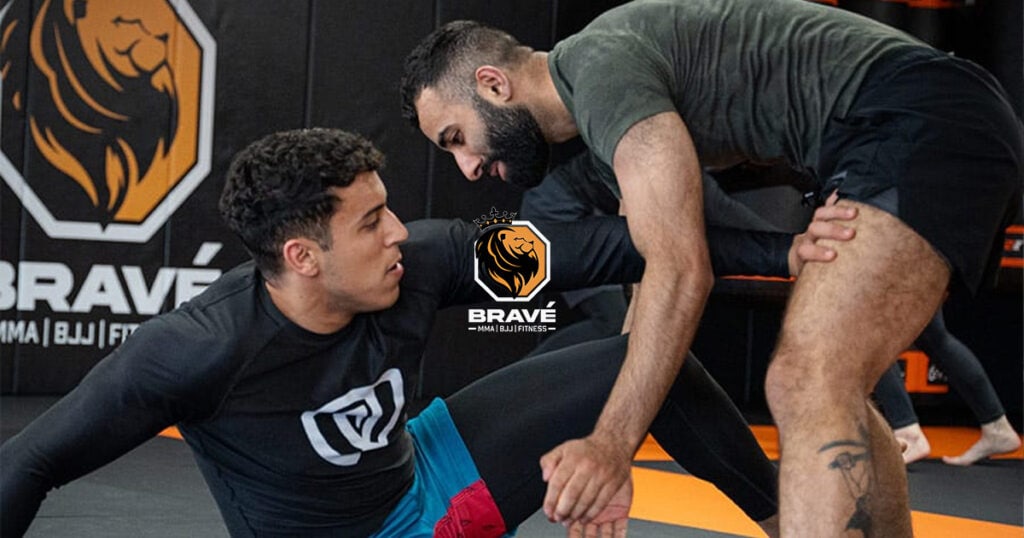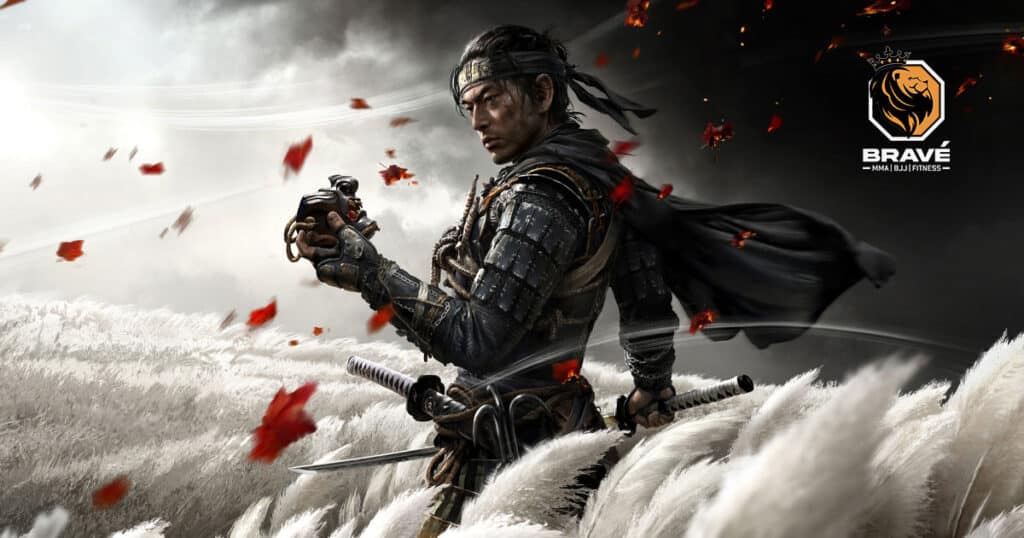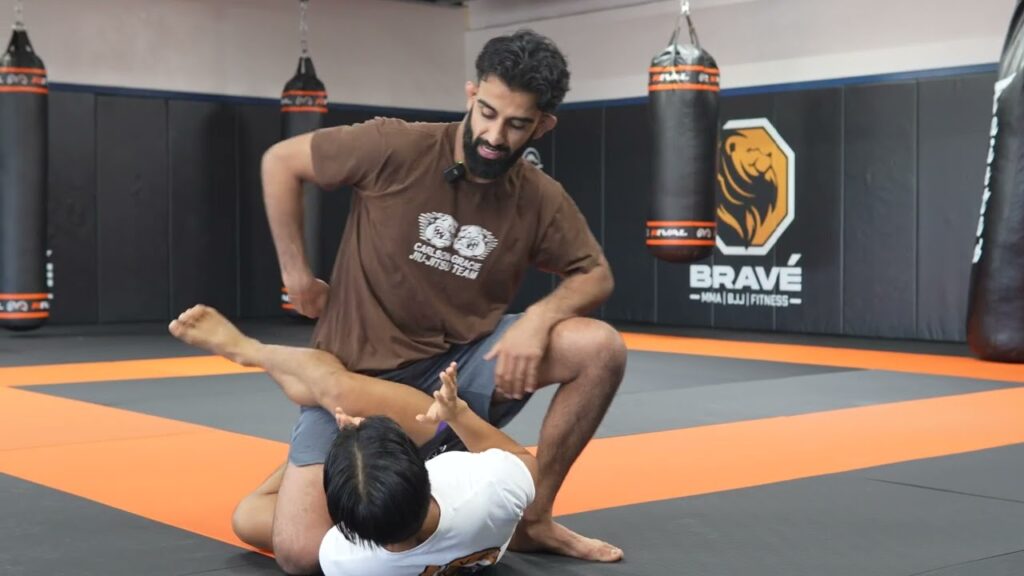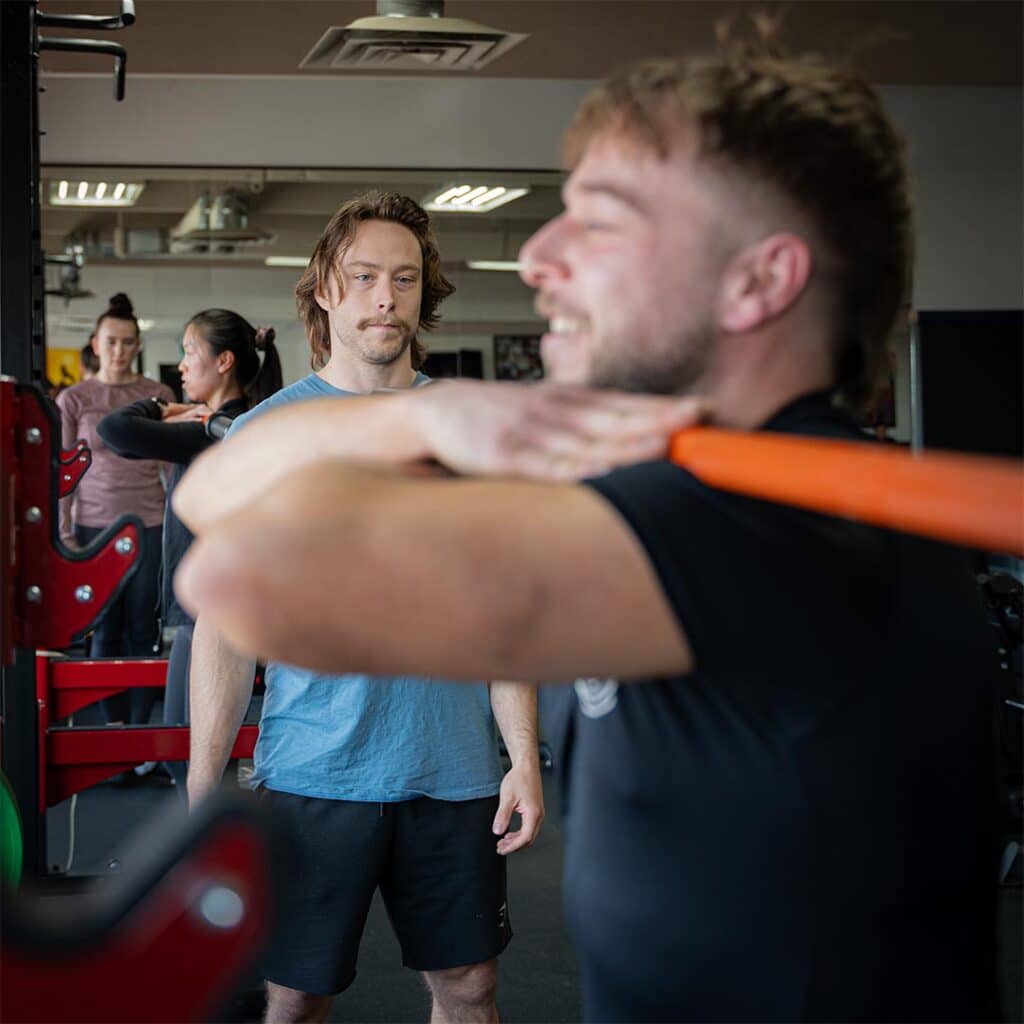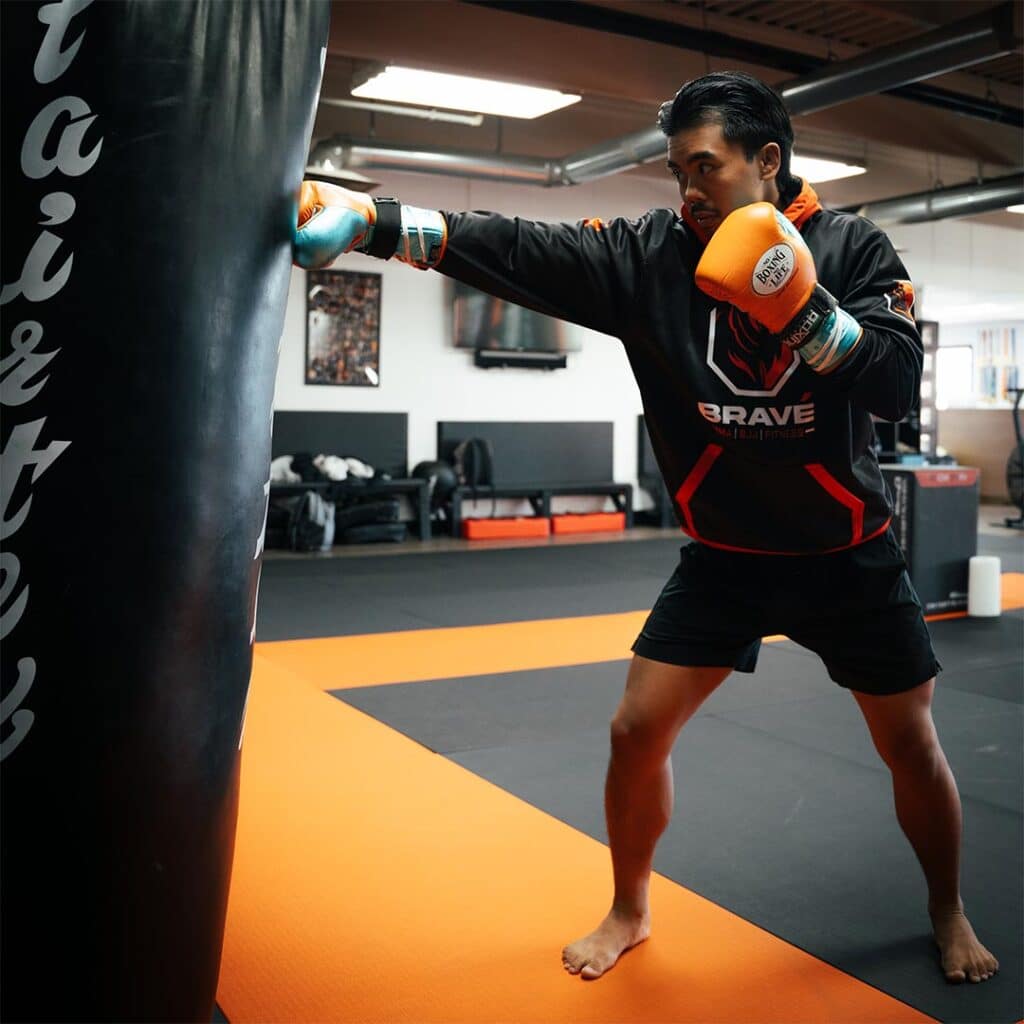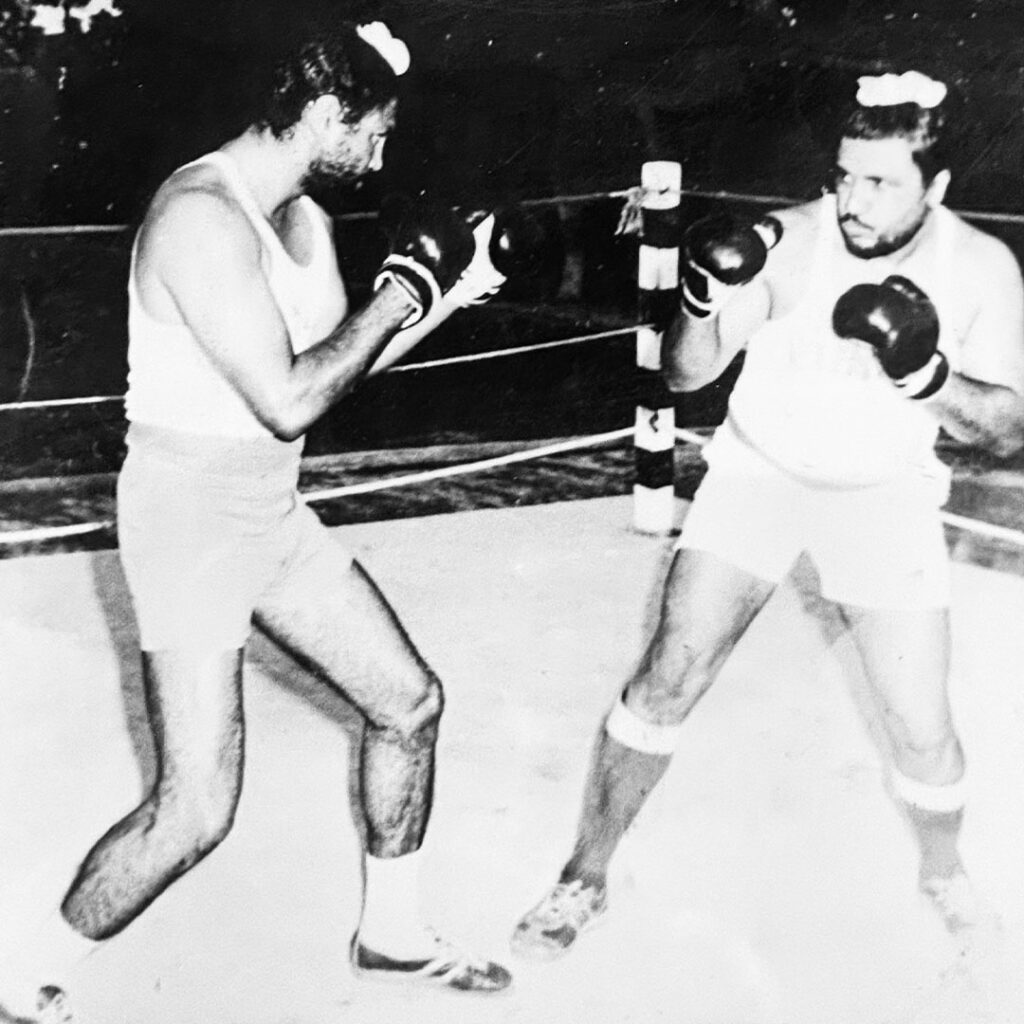Ultimately, the pursuit of skill in martial arts is about empowerment. Knowing how to whoop ass feels good! It inspires confidence, and a confidence that is quiet and not obnoxious. It feels good, to know you can protect yourself if a situation ever got physical or out of hand. And that doesn’t mean that you ever HAVE TO, but there is a peace in knowing you could. I know that when I see new people walking through the doors of our gym, that a lot of them hope that they can at the very least get a taste of that throughout there tenure with us. If it was purely about a workout, there are many other big box gyms nearby that sell that for a cheaper price.
My biggest duty as an instructor is to coach you towards developing skill and competency in boxing and kickboxing. Doing what I can in my power to help you understand the fundamentals of these combat sports. Mentally, when you’ve reached a level of expertise the biggest challenge becomes simplifying complex information, and being able to convey it in a way that is understandable to most people. I try my best to expose you to a concept multiple times, so that slowly it’s essence gets entrenched in your memory. If I can sell you on the value of effective repetition then the rest becomes easy.
It’s of critical importance to me to provide the beginner with the best chance at having success of enjoying martial arts. To value them as the blank canvas that they are, and make the first strokes of the painting with careful precision. A beginner is owed the respect of coming from a place of knowing nothing, and having experienced nothing that relates to combat. And I myself, know a lot about combat sports, but I don’t know jack shit about scuba diving.
If I sparked the interest of wanting to go buy a scuba suit, and take a trip to Belize I would sincerely hope that my scuba instructor was able to guide me through the process of scuba diving with that same respect. The last thing I’d want is for Scuba Steve to be getting mad at me because I put my scuba suit on backwards and forgot to fill my oxygen tank. A beginner in anything deserves a grace period to make mistakes.
If I am to badger a beginner on every little thing they are doing wrong then I create this persistent tension in there execution of technique. They will forever second guess themselves for fear of being corrected. In the beginning, you can gather so much information just by watching how someone moves. You can pick up on inefficiencies of movement and favoured sides of there body. You can also get a gauge of there personality and see how they approach playful drilling with partners. It’s up me to introduce technique in a way that feels approachable, so that visually they can see what is correct, and with time work towards that notion of technical proficiency.
I know a tree is made of wood. That’s about it.
Every day I walk by the same tree in my neighborhood. My dog, Peter Chan, stops to piss on it—his daily ritual. Sometimes I see birds perched up on its branches. It’s a tall one—really tall. Its branches sprawl out in every direction, more than any other tree on the block. Its bark is this strange greyish-brown—not quite grey, not quite brown. It’s a beautiful tree.
And that’s all I know.
My neighbor Michel—French Canadian, botanist—sees it through a very different lens. As you will shortly see, this man knows way too much about trees.
One day, as Peter approached the tree to begin his sacred urinary affirmation, Michel called out:
“Y’know, it’s interesting that he enjoys urinating on that particular one. These Trembling Aspens release a very pungent, and mildly dangerous, neurotoxin to keep animals away. This is the season where they maximize pollination.”
“Oh hey Michel, didn’t see ya there! Is that right?”
“Yes, it’s absolutely fascinating.”
He started to walk over, likely to drop a PhD-level dissertation on bark acidity, but paused at the sight of Peter Chan’s helicopter tail and slobber flying through the hot sun.
“Yeah, I mean… it’s a nice tree…”
“Oh it’s more than just a nice tree. Before your family moved here, we had Trembling Aspens lining the whole block. Beautiful Balsam Firs too. But a few neighbors complained about allergies from the neurotoxin I mentioned earlier and it all just—”
“Sorry to interrupt, Michel, but I really gotta—”
“It all just sent the neighborhood into calamity! I had to petition the city councillor just to keep this one Trembling Aspen — trembling aspens are being excessively logged in the Okanagan, and this one is anchored so dutifully in front of your home. It’s a piece of botanical history, this tree! The first one was planted in Fort Edmonton Park in 1867—”
Peter started to whimper. He wanted to leave. And I felt his pain, as Michel droned on, completely unaware of every possible social cue I could give him that I didn’t quite frankly give anymore of a shit about the tree.
Since that incident, I actively avoided walking my dog when Michel was outside watering his plants. Not because I hate trees. But because I know it’ll turn into 15 minutes of unsolicited Tree Trivia.
And the truth is, I will never look at that shivering birch—or Trembling Aspen, or whatever it was—in a positive light again. Michel’s fanaticism wrecked it.
This is something we take seriously when designing our fundamentals classes.
Information overload can ruin a beautiful thing.
Our job as instructors isn’t to dump everything we know onto you from day one. Our job is to lay a foundation—to spark curiosity. To create enough intrigue and satisfaction that you want to go deeper. Lesson by lesson you start to gain respect for fundamental principles and appreciate the finer details.
And that is where we must meet in the middle as teacher and student. My duty is to guide you through this world with respect and to hopefully fan the flames of your enthusiasm, but it is up to you to show up with the love of the art alive in you. I can take a horse to the pond, but I can’t make him drink.
I can show you the path, I can hope to give you the rub of my enthusiasm — but I cannot give you discipline, I can’t inject passion into your veins.
My cousin, Alan, began his summer semester at the Univerisity of Alberta, and was doing his undergraduate degree as a bachelor of sciences. He hadn’t declared a major yet, but he decided that he wanted to do Plant Biology 211 as an elective course. My eyebrows raised in part surprise and part curiousity at the thought of that, and so I asked him why.
“Don’t you think it would be sick to learn about prehistoric plants and shit…?”
I mean sure, I can understand that. Curiously I asked him “who is your professor?”
Immediately, he said “Michel Archambeau”.
And so, weeks went by and each time I spoke to Alan it seemed like his initial innocent curiosity for plants turned into this feverish passion for all things vegetation. He even at one point said that he wouldn’t eat meat on Tuesday’s anymore because he reserved that day to harvest energy from the sun.
So now, I have a cousin that reserves one day of the week for photosynthetic digestion of sunlight because his curiosity
was so artfully transformed into more by the passion of Professor Michel Archambeau. And what must that say about the power of passion in what we teach.
Now, sometimes I hear Michel in my backyard humming a French tune with glee, as he waters his in numerous flowers. I look at him and smile, and everytime I walk by that same tree — with its greyish brown wood — I call it by its rightful name, a shivering aspen.

